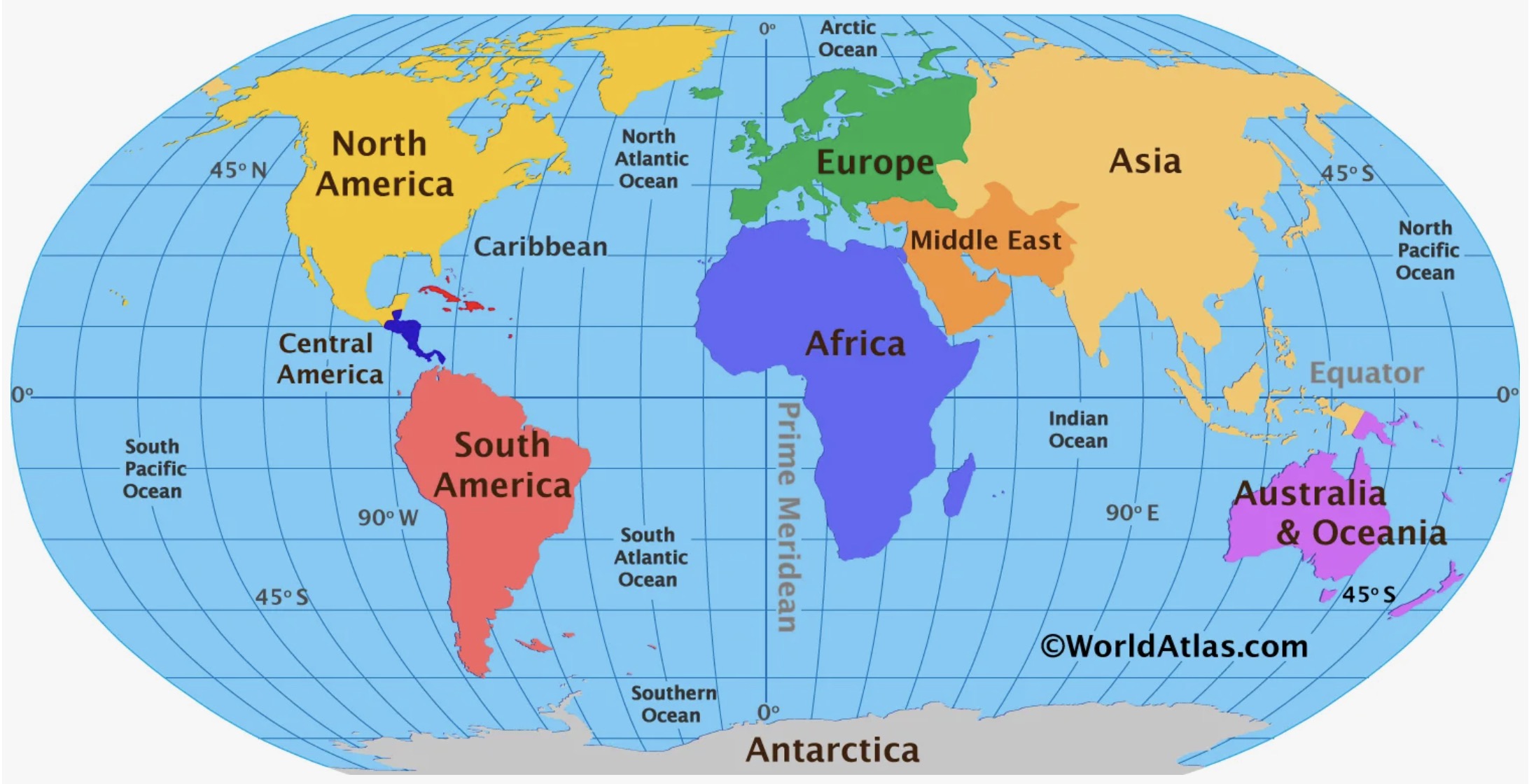GEOGRAPHY-OCEANS
- Подробности
- 753
The oceans are the largest bodies of water on Earth, covering about 71% of the planet’s surface and regulating its climate and ecosystems. Traditionally, there are five oceans: the Pacific, Atlantic, Indian, Southern, and Arctic. Each ocean has its own unique characteristics, currents, and marine life, making them essential for understanding the Earth as a blue planet.
Continents

The Oceans are considered the largest continuous bodies of water on Earth and the foundation of the planet’s climate and ecosystems. The very word ocean comes from the Greek Okeanos — the great river thought to encircle the world. Covering about 71% of the Earth’s surface, the oceans connect continents, regulate temperatures, and sustain countless forms of life.
Emerging in geological history soon after the planet cooled and water condensed, the oceans shaped Earth’s surface and atmosphere over billions of years. Today, geographers and scientists traditionally recognize five main oceans: the Pacific, Atlantic, Indian, Southern, and Arctic. Each differs in size, depth, currents, and ecosystems, yet together they form one global ocean, continuously flowing and interconnected.
One of the greatest contributions of oceanic study is understanding how seas and currents shape human history. The Pacific, the largest ocean, hosted the navigation of Polynesian peoples and now drives global climate through El Niño and La Niña. The Atlantic connected Europe, Africa, and the Americas through trade, migration, and exploration. The Indian Ocean carried the monsoon winds that powered ancient maritime routes. The Southern Ocean, encircling Antarctica, regulates the planet’s heat balance, while the Arctic Ocean, though ice-covered much of the year, is a frontier of climate research and resource debates.
The oceans also differ greatly in their resources and environments. The Pacific contains the deepest trench on Earth, the Mariana Trench; the Atlantic is rich in fisheries and oil reserves; the Indian Ocean holds vital shipping lanes and diverse marine life; the Arctic shelters fragile polar ecosystems; and the Southern sustains immense krill populations, a cornerstone of the food chain. From coral reefs to abyssal plains, their habitats shape both biodiversity and human economies.
Although nations divide maritime borders with political lines, the oceans themselves are seamless and shared. Trade, cultural exchange, and migration have always flowed across them, linking distant societies. In the modern age, oceans remain both a vital resource and a fragile environment, threatened by pollution, overfishing, and climate change. Understanding them helps us see the Earth not as a set of isolated lands, but as a blue planet where water is the true medium of life and connection.
LISTEN TO THE TEXT





 Как правильно изучать английский язык по карточкам (статьи)
Как правильно изучать английский язык по карточкам (статьи)